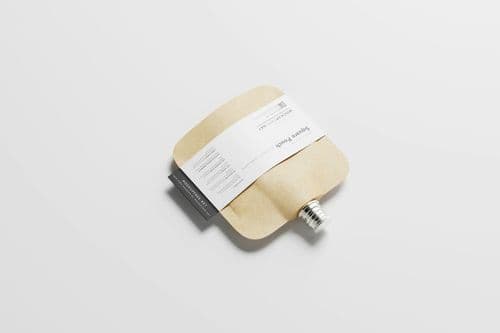Key Points
- Bioreceptive, porous concrete with balanced pH lets moss anchor and thrive; used as non-structural cladding.
- Bio-gel seed layer ensures quick, even establishment; moss typically self-sustains after ~12 weeks.
- Evaporative cooling and shading can lower facade temperatures and reduce cooling loads.
- Water-retentive surface helps manage stormwater and reduces runoff.
- Upcycled aggregates and durability testing support long service life; typical CO₂ uptake ~0.5–1.2 kg/m²/year, with species selected to match local climates.
Full interview with Respyre
1. Respyre’s bioreceptive concrete system enables the growth of moss on building facades. Could you elaborate on how the bioreceptivity of concrete works and what makes it ideal for moss growth?
Respyre’s bioreceptive concrete is engineered with a porous structure and tailored surface chemistry that promote moss attachment and growth. Unlike standard concrete, which is typically dense and alkaline, our material has enhanced water retention, micro-roughness, and a balanced pH that makes it hospitable for biological colonization. This creates an ideal foundation for moss, which thrives on surfaces that hold moisture and offer microhabitats for rootless anchoring.

2. The moss gel plays a key role in fostering moss growth. How does this gel interact with the bioreceptive concrete, and what makes it different from traditional growth methods?
The moss gel acts as both a biological seed layer and a nutrient reservoir. It contains finely processed moss fragments and spores suspended in a medium that adheres well to the bioreceptive surface, ensuring uniform coverage and rapid initial establishment. Unlike traditional methods, which rely on waiting for natural spore deposition or using pre-grown mats, the gel allows moss to establish directly on the facade with minimal preparation, speeding up colonization and reducing labor costs.
3. Moss-based green facades are often praised for their climate-adaptive properties. How does Respyre’s system contribute to reducing urban heat island effects, and what kind of energy savings can be expected over time?
Moss-based facades lower surface temperatures by providing evaporative cooling and by shading the underlying materials. This reduces heat absorption and helps mitigate the urban heat island effect. Over time, this can lead to lower cooling demands for buildings, contributing to energy savings. While exact savings depend on climate, orientation, and building type, studies on vegetated facades show potential reductions in cooling energy demand of 10–30%.
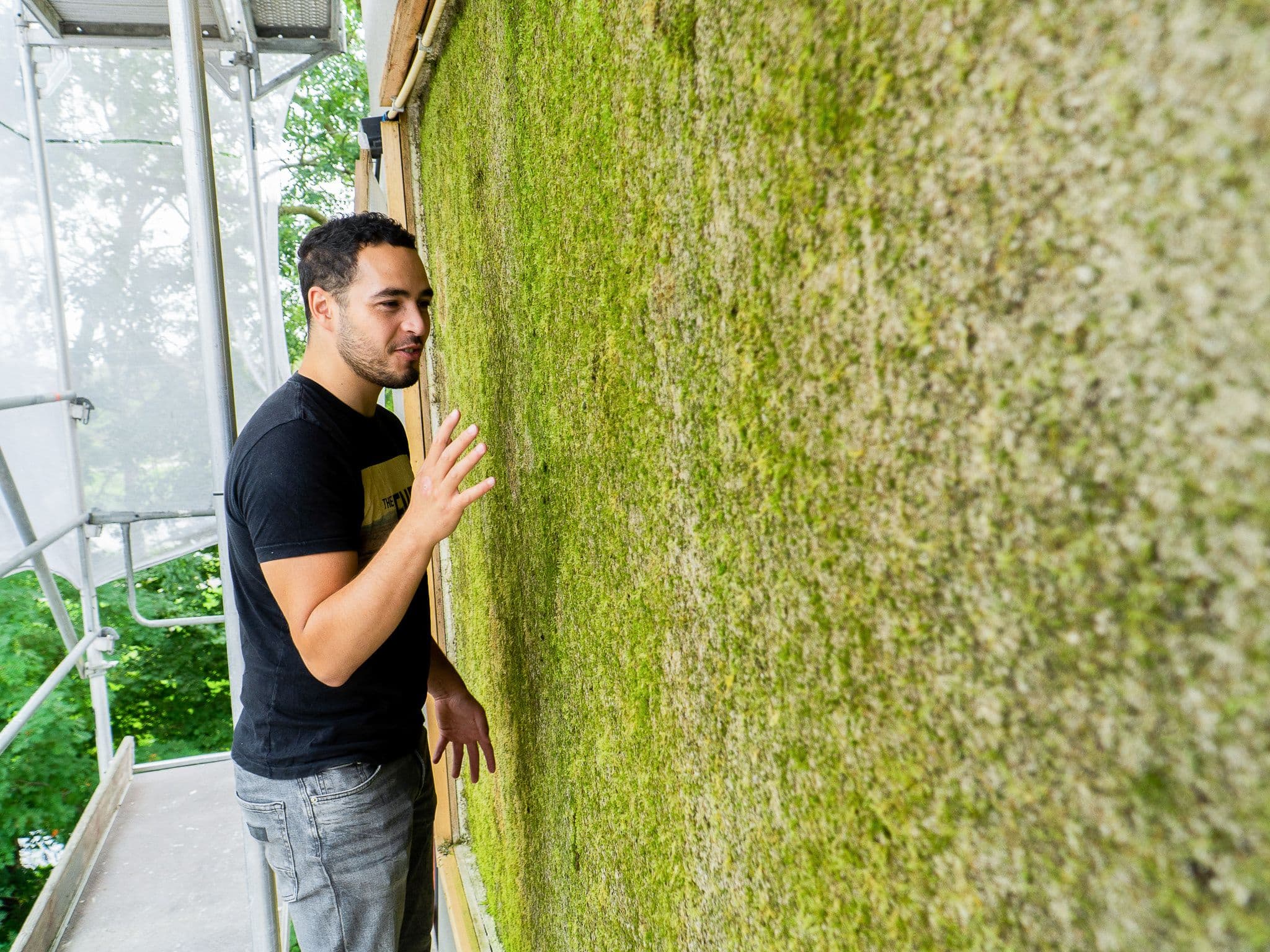
4. You mention that moss can self-sustain after 12 weeks of growth. How does the system handle maintenance once the moss has matured, and what environmental factors are critical to its long-term survival?
Once established (usually after about 12 weeks), the moss is largely self-sustaining, requiring minimal maintenance. Critical environmental factors include access to occasional rainfall or irrigation. Unlike vascular plants, moss does not require soil or intensive care, making it exceptionally low-maintenance in urban environments.

5. Moss is a resilient species, but how do you ensure that the moss adapts well to various climates and urban conditions, particularly in regions with extreme weather patterns?
We select moss species that are native or well-adapted to local conditions, ensuring they can handle regional climate stresses such as drought, frost, or high winds. Additionally, the bioreceptive concrete itself acts as a stabilizing substrate, retaining moisture and buffering temperature fluctuations, helping the moss survive extreme conditions.
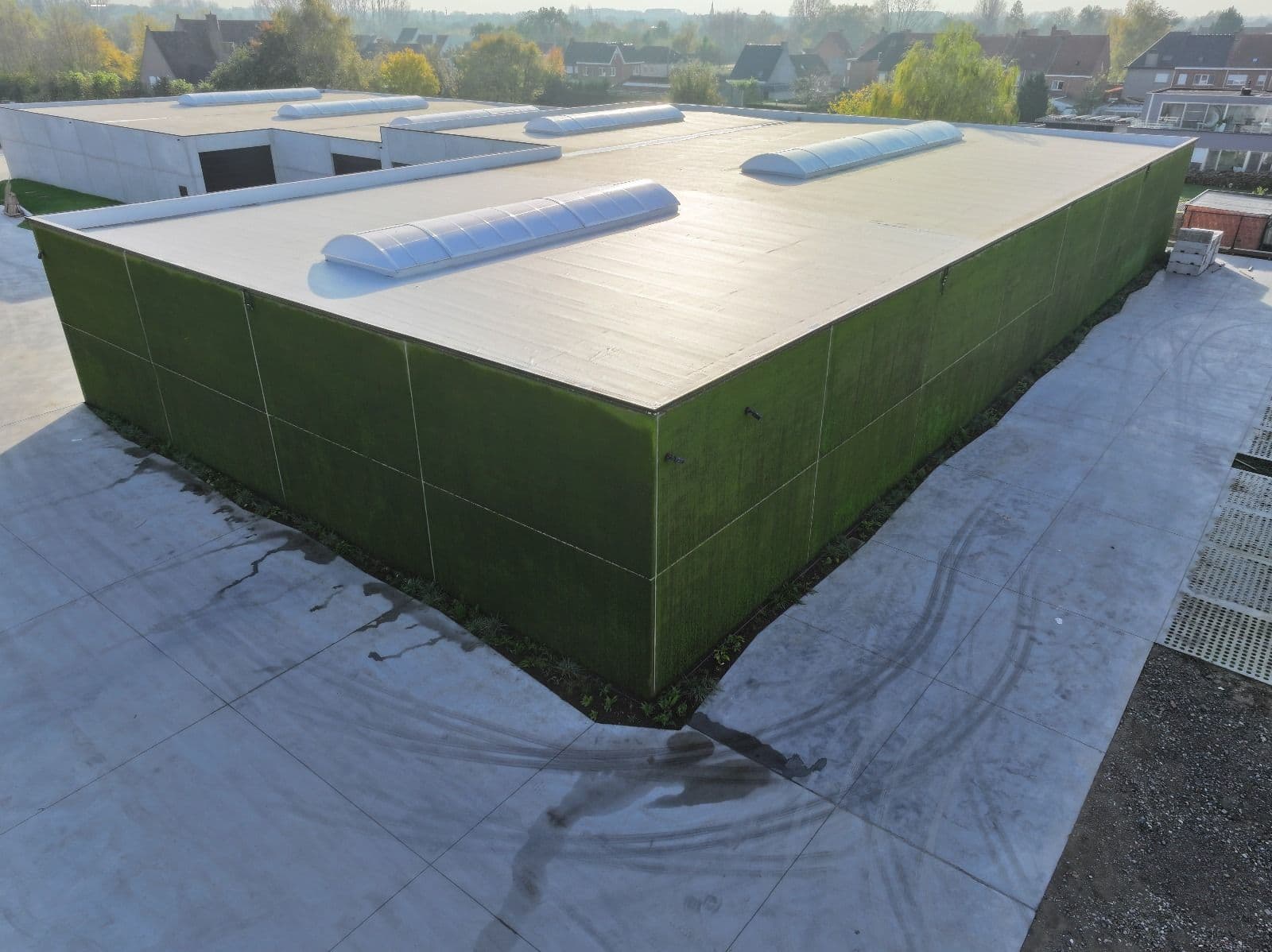
6. CO₂ absorption and storage by moss have been highlighted as a key benefit of Respyre. How much CO₂ can the moss absorb over the lifespan of the facade, and how does the concrete contribute to this process?
While exact absorption rates vary by species and coverage, research suggests that our moss facades can absorb approximately 500–1200 grams of CO₂ per square meter per year. The concrete plays a passive role by offering a long-lived surface that supports biomass accumulation over decades, amplifying the cumulative CO₂ capture potential.
7. In your process, how does the bio-gel facilitate moss attachment to the bioreceptive concrete, and how do you control the speed and spread of moss growth across various surfaces?
The bio-gel provides a moist, adhesive medium that anchors moss fragments securely to the concrete surface, overcoming the typical barriers of gravity and desiccation during early establishment. It only grows over bioreceptive concrete, so is easily controlled.
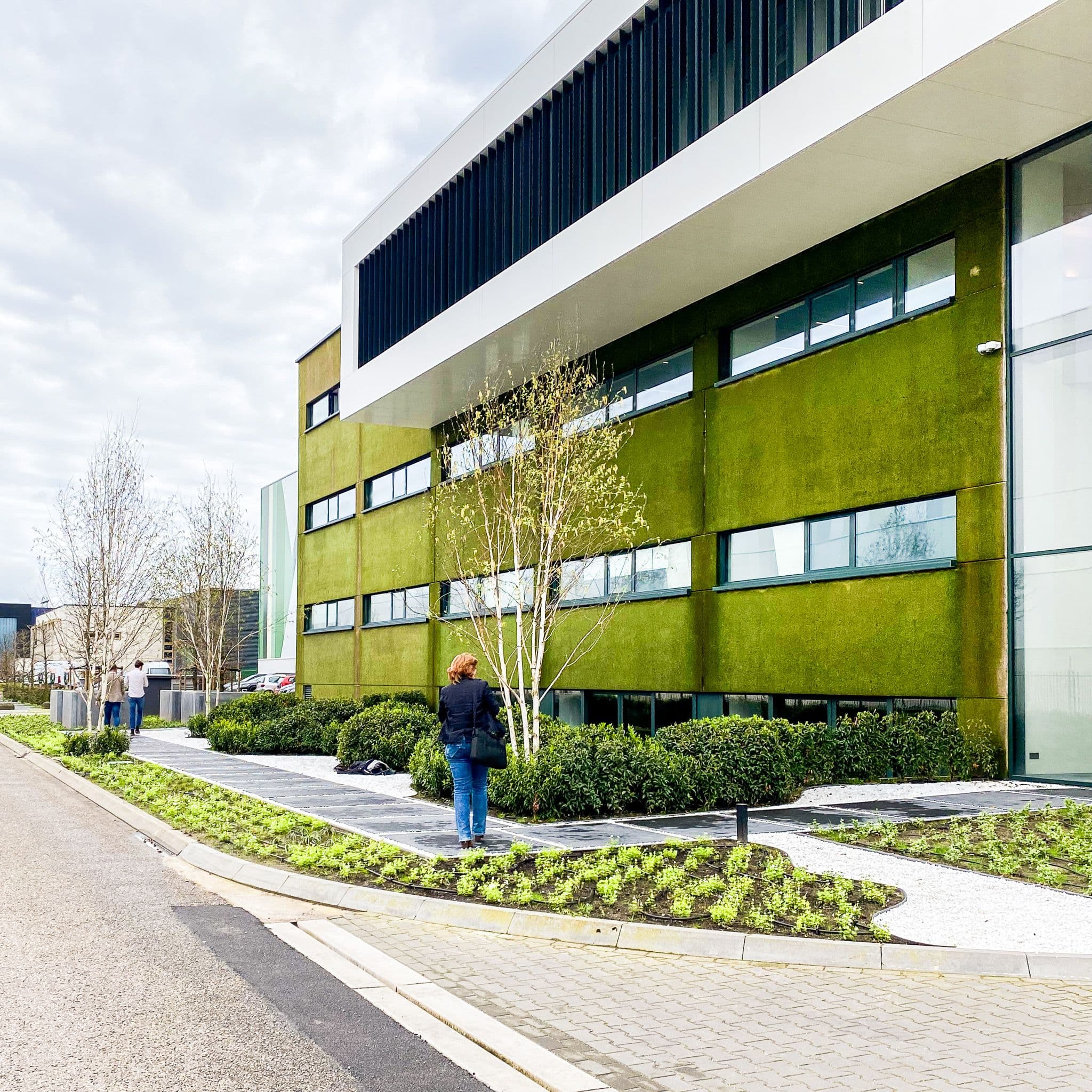
8. Water retention is a significant benefit of the VertiScape system. Could you explain the role of water retention in the sustainability of the facade and its impact on reducing water-related urban nuisances?
Water retention is crucial for keeping the moss hydrated between rainfall events, minimizing irrigation needs. Additionally, the facade acts as a micro-reservoir, reducing runoff and helping manage stormwater at the building scale. This not only supports plant life but also mitigates urban issues like flash flooding and water pooling, contributing to a more resilient cityscape.
9. Given that Respyre uses bioreceptive concrete made from upcycled materials like granulate rubble, how do you ensure the material remains strong, durable, and suitable for urban architecture?
We test our upcycled concrete blends to ensure they meet industry standards for strength, durability, and weather resistance. Importantly, the surface treatments that enhance bioreceptivity do not compromise the underlying material’s integrity. Since the bioreceptive concrete is used solely as a cladding, functioning as the outer shell of the building, it is not required to bear structural loads. This allows us to focus on optimizing the surface for ecological performance without the need for full structural capacity.
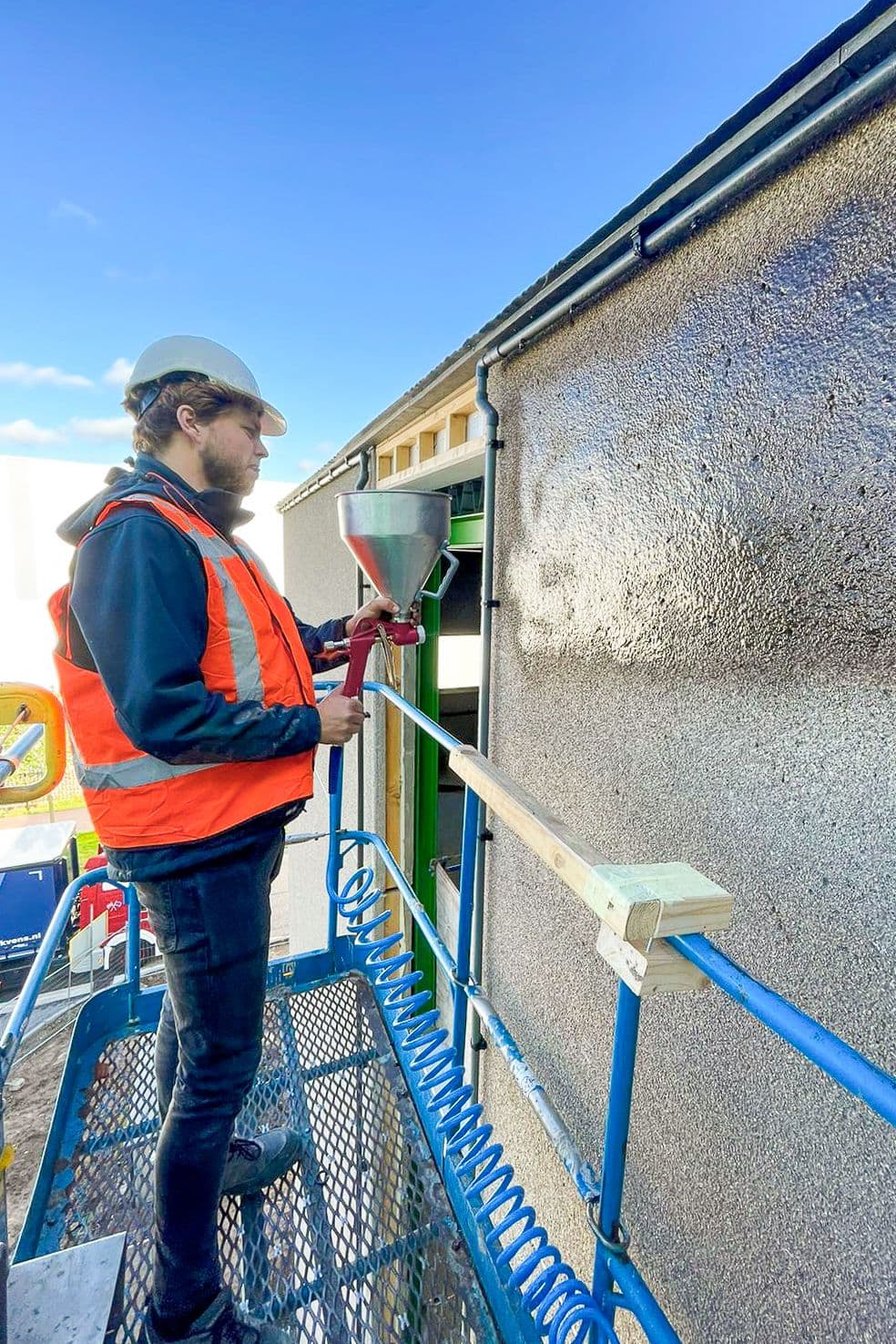
10. Looking ahead, what innovations do you foresee in the field of bioreceptive facades and green architecture? How do you see this technology evolving to meet future sustainability and urban resilience goals?
We anticipate the integration of smart technologies, such as sensors embedded in facades to monitor growth conditions and performance in real time. Advances in material science may also allow for multi-species systems, combining moss with lichens, algae, or microflora for enhanced ecosystem services. Ultimately, we see bioreceptive technologies playing a critical role in the shift toward regenerative cities, where architecture not only minimizes harm but actively improves environmental quality.


